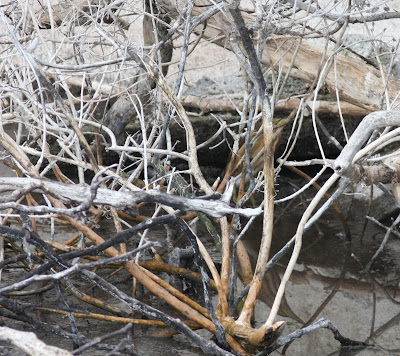Little Bittern (Ixobrychus minutus)
Well-camouflaged and motionless, the Little Bittern (Ixobrychus minutus) is not easy to discern amid the tangle of dry branches, but its reflection is visible in the lower righthand half of the image. This female bird was found in a partially empty irrigation pond in Tazacorte this morning, December 19.
Little Bittern (Ixobrychus minutus) in typical "Bittern" alarm posture
The bird kept low for some time until it was finally disturbed by the erratic movements of a pair of Moorhens which had become aware of my presence.
I particularly like the shot above: the subtle greyish tones give it an almost impressionistic quality: surprisingly ethereal for the inside of a concrete pond...
Little Bittern (Ixobrychus minutus)
This is only my second sighting of Little Bittern on La Palma. The previous record dates from the end of March 2012, and was also of a female, found in exactly the same half-empty pond in Tazacorte. The species is classed as a "passage migrant to the Canary Islands (all islands) and an occasional summer breeder (Tenerife)". [Field Guide to the Birds of Macaronesia, Eduardo García-del Rey, Lynx Edicions 2011].






















































